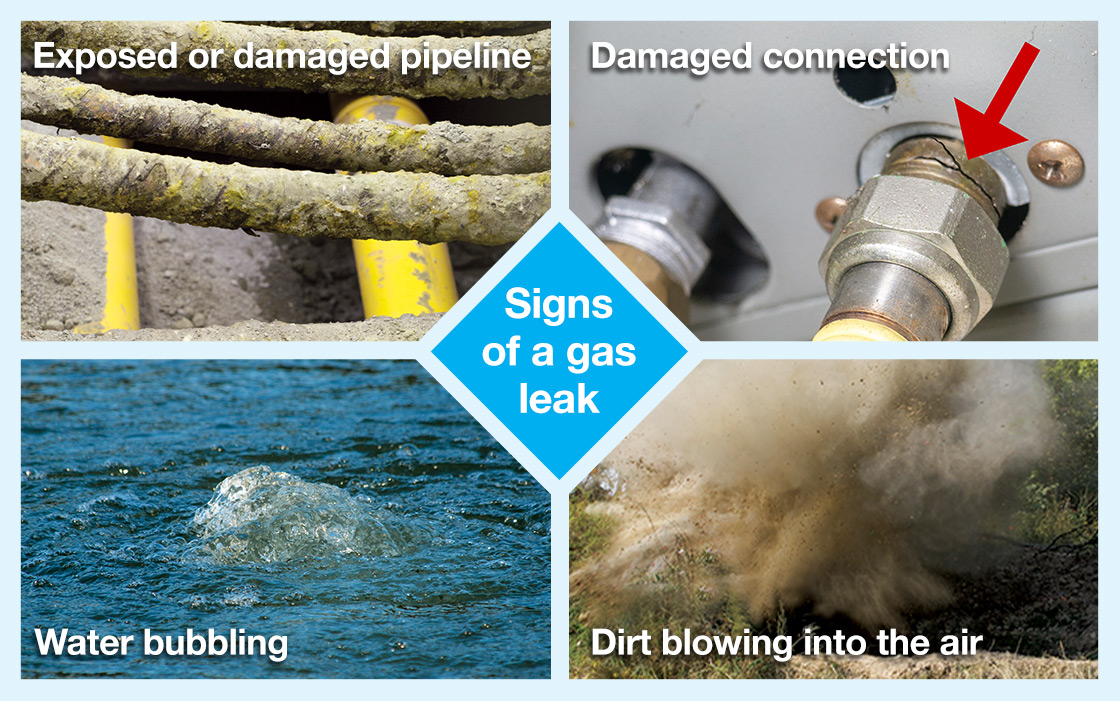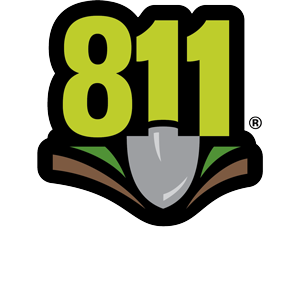| View in browser > |
 |
| Recognizing disaster-related gas leaks |
|
As a first responder, you probably know that natural gas leaks can lead to fires. However, you may not be aware that the reverse is also true: Fires can lead to natural gas leaks. And so can high winds, flooding, heavy winter storms and other disasters. Learning to recognize disaster-related gas leak indicators can help you protect your community from further calamity. |
|
|
 |
|
| LOOK and LISTEN for these signs of a gas leak after fires, floods, severe storms or other disasters: an exposed pipeline; a damaged connection to a gas appliance; dirt spraying or blowing into the air; continuous bubbling in water; a hissing, whistling or roaring sound. |
|
|
|
Pipeline damage due to fires
Flames and heat from structure fires can damage aboveground gas piping and its connections to gas appliances. Pipe thread sealants can melt when exposed to extreme heat, resulting in loosened connections. Metal gas pipes can be damaged by extreme heat even if they are not directly involved in flames: The pipes will expand when heated and contract when cooled, compromising pipe fittings. All of this can increase the risk of gas leaks. |
| Buried pipelines may be exposed and damaged by excavation equipment when fire service personnel dig firebreaks. Buried pipelines can also be severely damaged by erosion and debris flows that may result when heavy rain falls on burned areas. Lastly, underground fires or releases of high-pressure steam may compromise plastic gas pipes and cast-iron mains, resulting in an accumulation of gas underground at flammable concentrations. |
|
Recognition and response tips
|
| • |
 |
Be alert for damaged pipe joints or connections to gas appliances that can allow gas to leak. Hissing or whistling sounds from appliances or piping can also indicate leaking gas. |
|
| • |
 |
If you have been trained to do so, you may shut off a gas leak at an aboveground service meter valve or appliance supply line. |
|
| - |
 |
If you shut off a gas service meter, leave it off. Only National Grid personnel can turn the gas back on. |
|
| - |
 |
Inform National Grid of any gas meter valve that has been closed. This information is critical for system safety and service restoration. |
|
| - |
 |
Eliminate potential ignition sources such as open flames, cigarettes (including e‑cigarettes or vape pens) and spark-producing equipment. Use intrinsically safe radios and flashlights for the duration of the response. |
|
|
| • |
 |
If leaking gas has ignited, let it burn. Extinguishing the fire may allow unburned gas to collect and cause an explosion. |
|
| • |
 |
Collaborate with National Grid emergency representatives to identify areas served by plastic pipes and cast-iron mains. |
|
| • |
 |
NEVER operate valves on underground gas pipelines, as these are for National Grid’s use only. |
|
| |
|
Pipeline damage from hurricanes and floods
High winds and flooding can cause significant damage to buried natural gas pipelines. Trees that are uprooted by strong winds can wrench or puncture nearby pipes. Fast-flowing flood waters and debris can expose buried pipelines or even rip them from the ground. Severe flooding can cause structures to shift on their foundations, dislodging gas service lines; it can also cause extensive damage to gas-fired appliances and related piping. |
|
|
|
Recognition and response tips
|
| • |
 |
Do NOT rush into flooded areas. Never enter floodwaters to save a life until utilities have been secured. |
|
| • |
 |
When floodwaters recede, be alert for exposed and separated gas pipes. Continuous bubbling in water can also indicate a gas leak. |
|
| • |
 |
Advise residents not to operate gas-fired equipment or appliances where these items or their gas supply lines have been affected by flooding. Flood damage is not always readily apparent and can create operational and safety concerns weeks or months after the initial event. Any flood-damaged gas appliance must be disconnected and then tested, repaired, and inspected by a qualified professional before operation. |
|
| |
|
Winter storm damage
Aboveground natural gas piping can be damaged by heavy accumulations of ice and snow, dripping or standing water that freezes and refreezes, and snow and ice that falls from roofs. Gas meters and pipes can also be damaged by snow-removal equipment. |
| During sustained subfreezing conditions, buried gas pipes can be compromised when ice expands underground and pushes up soil in an effect known as frost heave. This phenomenon causes roads to develop humps and dips and can damage underground gas transmission and distribution pipelines in the same way. Neighborhoods with older gas infrastructure, such as cast-iron mains, are most vulnerable. |
|
Recognition and response tips
|
| • |
 |
When called to investigate a reported gas leak near a structure during or after a severe winter storm or freeze, conduct a visual inspection of any outdoor meter assembly and associated piping. |
|
| • |
 |
Responders who have been trained to do so should use a combustible gas indicator (CGI) to check around meters and nearby manholes for the presence of migrating gas. Gas leaking from heave-damaged pipelines can be trapped by ice and snow and migrate some distance before entering buildings, utility vaults or sewer systems. |
|
| |
|
|
 |
| When responding to a suspected gas leak, always wear PPE and SCBA. If you have been trained to do so, use a properly calibrated CGI to confirm a gas leak and whether it poses an explosion risk. Work with National Grid personnel to obtain situational guidance and coordinate safe control of the situation. |
|
|
|
|
| |
| Keep yourself, your team and the public safe this spring. Visit firstresponder.ngridsafety.com today to register and complete your FREE utility safety training. |
|
|
|
| |
| |
|
| To report emergencies, call 911 and National Grid immediately. |
| |
 |
| In case of gas emergencies: |
 |
Long Island and the Rockaways:
911 and 1‑800‑490‑0045 |
 |
Metro New York:
911 and 1‑718‑643‑4050 |
 |
Upstate New York:
911 and 1‑800‑892‑2345 |
 |
Massachusetts:
911 and 1‑800‑233‑5325 |
 |
| |
|
|
|
|
| |
|
|
|
| |
| |
|
 |
#14788 © 2024 Culver Media, LLC |
|
| |
|
|
|
 |
|
| |